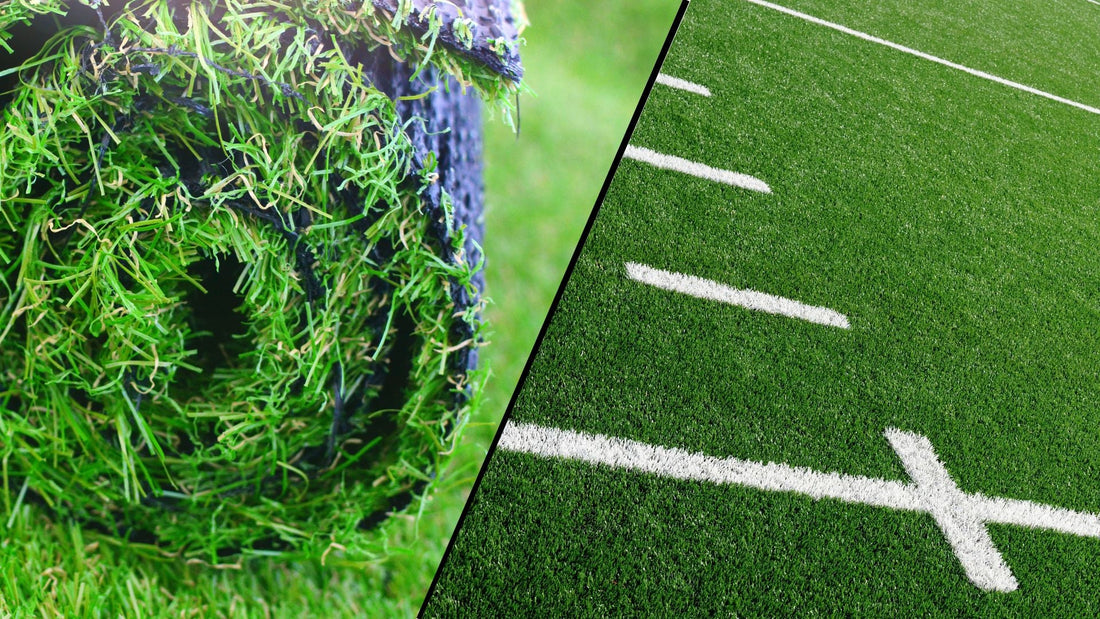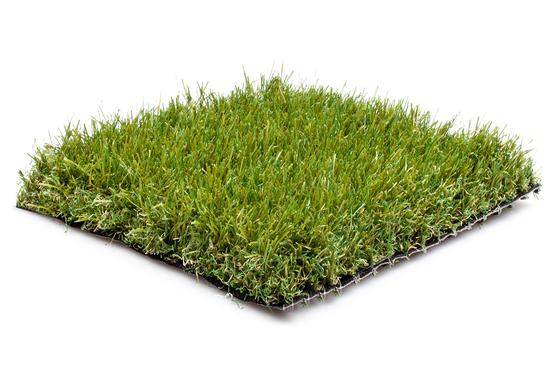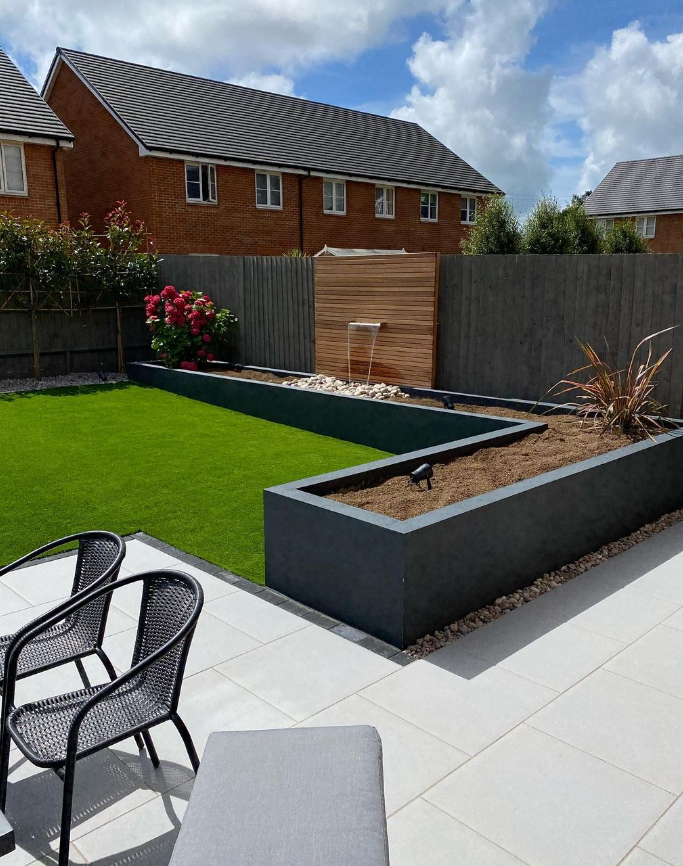
Artificial Grass vs Astroturf: What Is the Difference?
Many people use the terms artificial grass and Astroturf interchangeably, but they are not the same. While both provide a low-maintenance alternative to natural grass, they differ in materials, appearance, durability, and best uses.
This article explores the difference between Astroturf and artificial grass, covering everything from their origins to maintenance needs. Whether you’re a homeowner wanting the best artificial grass for home use or a sports facility manager choosing a durable turf, understanding these distinctions is key.
By the end, you’ll know whether Astroturf vs fake grass is the right choice for your needs and what to expect in terms of artificial turf maintenance and long-term costs.
Understanding Artificial Grass and Astroturf

Many people confuse artificial grass and Astroturf, but they are different. Artificial grass is a broad term for synthetic turf used in gardens, playgrounds, and commercial spaces, while Astroturf is a brand originally designed for sports stadiums.
Today, artificial grass closely mimics real grass, offering a soft, natural look. Options like those at Tuda Grass are ideal for landscaping. Astroturf remains popular for sports due to its durability.
Understanding these differences helps homeowners, landscapers, and facility managers choose the best option for their needs.
The History of Astroturf and Artificial Grass
Astroturf was introduced in the 1960s for sports stadiums, first appearing in the Houston Astrodome. Early versions used stiff nylon fibres, prioritising durability over comfort.
Artificial grass developed later as a landscaping solution, evolving with softer fibres, improved drainage, and UV resistance. Once mainly for sports, it is now widely used in homes and commercial spaces.
Technological advancements have made the difference between Astroturf and artificial grass clearer, with Astroturf remaining a top choice for sports while artificial grass dominates residential and decorative applications.
Key Differences in Material and Construction
A key distinction in artificial grass vs Astroturf is the materials used. Astroturf was originally made from stiff nylon fibres for durability, while modern versions use polyethylene and nylon for improved performance.
Artificial grass is typically made from polyethylene or polypropylene, creating a softer, more natural feel. Its flexible backing enhances comfort, whereas Astroturf prioritises stability for sports.
Infill also differs—Astroturf often requires rubber or sand for shock absorption, while artificial grass can function with minimal infill, depending on its design. These material differences affect durability, comfort, and best-use applications.
Appearance and Texture Comparison

A key difference between Astroturf vs fake grass is their look and feel. Artificial grass is designed to mimic natural lawns with varying shades, thatch layers, and realistic blade shapes. It also feels soft and cushioned underfoot.
Astroturf has a uniform, synthetic appearance with shorter, stiffer fibres. While modern sports turf has improved, it lacks the natural variation found in high-quality artificial grass.
Overall, artificial grass offers a more realistic look and comfortable feel, making it ideal for homes and play areas, while Astroturf is built for performance and durability in sports settings.
Durability and Performance in Different Settings
When comparing, durability is key. Astroturf is designed for high-impact sports, offering excellent traction and resistance to wear. It performs well on football pitches and hockey fields but can feel harsh underfoot.
Artificial grass is built for comfort and aesthetics, making it ideal for gardens and play areas. High-quality options have UV-resistant fibres and strong backing, ensuring long-term durability. While it handles foot traffic well, it may not be as resilient as Astroturf in extreme sports conditions.
Both surfaces can last over a decade with proper artificial turf maintenance, but artificial grass requires less upkeep and is better suited for residential and commercial spaces.
Best Uses for Artificial Grass vs. Astroturf
The choice between artificial grass or Astroturf depends largely on where and how it will be used.
Artificial grass is best suited for:
-
Residential gardens, offering a natural look with minimal upkeep.
-
Play areas and schools, providing a soft and safe surface for children.
-
Commercial spaces like office courtyards and rooftop terraces.
-
Pet-friendly areas, as some varieties include odour-resistant technology.
Astroturf remains popular for:
-
Sports facilities such as football pitches and hockey fields.
-
Indoor arenas where natural grass maintenance is difficult.
-
High-traffic areas that need a firm, non-slip surface.
When deciding between the two, consider factors like comfort, durability, and how much foot traffic the area will experience.
Maintenance Requirements for Each Option

Proper artificial turf maintenance keeps both artificial grass and Astroturf in good condition, but upkeep differs.
Artificial grass requires occasional brushing to keep fibres upright, along with debris removal and rinsing to prevent dirt buildup. Good drainage helps prevent mould and odours, making it a low-maintenance option.
Astroturf needs more frequent care, including infill top-ups, brushing to prevent flattening, and disinfecting in high-traffic areas. Sports surfaces require additional upkeep to maintain performance.
Overall, artificial grass is easier to maintain, making it ideal for residential and commercial spaces, while Astroturf demands more attention in sports settings.
Cost Considerations: Which One is More Affordable?
The cost of artificial grass vs Astroturf depends on installation, maintenance, and longevity. Artificial grass has a higher upfront cost but requires little upkeep, making it a cost-effective long-term choice.
Astroturf can be cheaper initially but often needs more maintenance, including infill top-ups and resurfacing in sports settings. For homeowners, investing in high-quality artificial grass provides better value over time.
If you’re installing it yourself, our guide on installing artificial grass can help reduce costs.
Which Option is Best for Your Needs?
Ultimately, your choice depends on your needs. Artificial grass is ideal for gardens, playgrounds, and commercial spaces, offering a soft, natural look. For families, you may want to consider instead playground artificial grass, which provides a safe, cushioned surface.
Astroturf is best for sports fields, designed for durability and high-impact activities. While newer versions have improved, it lacks the comfort and realism of artificial grass.
Consider factors like maintenance, comfort, and sustainability when deciding which option suits your space best.
While artificial grass and Astroturf may seem similar, they serve different purposes. Artificial grass is designed for residential gardens, playgrounds, and commercial spaces, offering a natural look with minimal upkeep. Astroturf, on the other hand, is built for sports surfaces, prioritising durability and performance.
If you’re unsure which option suits your needs, ordering free samples can help you compare textures and quality firsthand. For expert advice on choosing the right turf for your project, contact us today at Tuda Grass. By understanding the key differences, you can make a confident decision on the best turf solution for your space.


